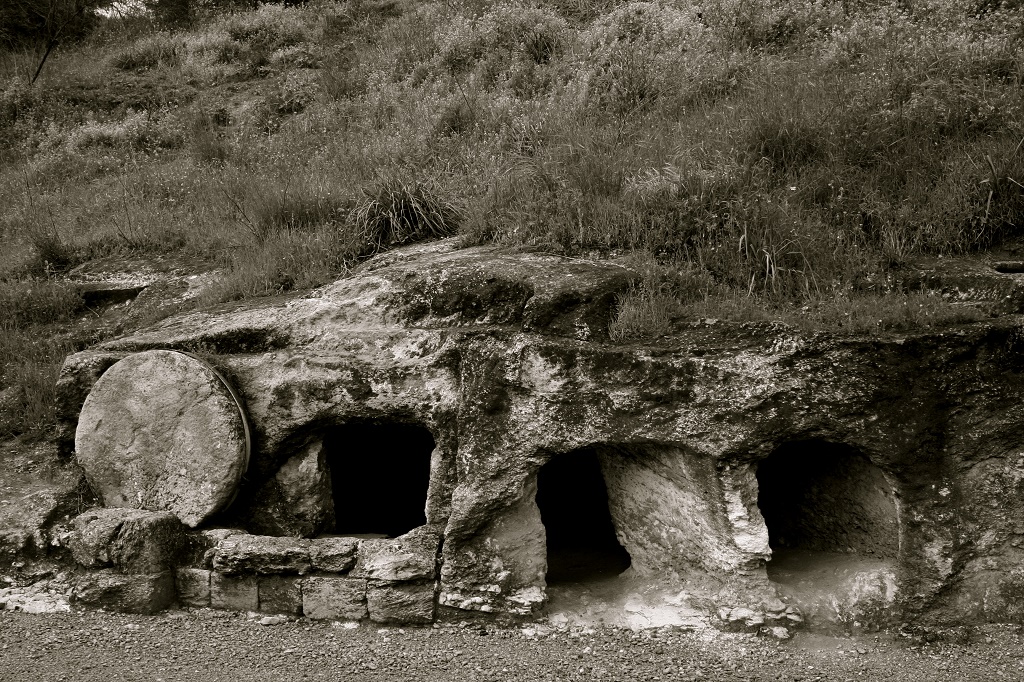During the season of Lent, we are acutely aware of death, it seems. The readings seem to have a sense of foreboding to them; we know we are getting closer and closer to Good Friday. In some of our churches, the holy water fonts are empty. The decor changes: instead of fresh flowers, there are cacti or simple, empty pots or even stones. We limit our feasting; we are on watch for death. We are, in a sense, headed for the tomb.
Catholic writer Heather King, in her book Redeemed: Stumbling Towards God, said this,
… I remember a homily that Father Jarlath at St. Thomas the Apostle once gave about the time Jesus raised Lazarus from the dead: he said we all have things in us that are from the tomb – old rotting resentments, griefs, sorrows – and when it is time to look at them, it’s a good idea to bring Jesus in with us.
Lent is about heading into the tomb. It is certainly about Christ’s Passion, Death and Resurrection (the Paschal Mystery, the Church calls it) but it’s also about acknowledging our own tomb. As King puts it, we all have that place in us where things are left to die. Maybe it’s a relationship that should have been mended a long time ago. Perhaps what is dying in us is our faith; life has worn us down and we wonder if God has forgotten us. Our tomb may be a place where we struggle with an addiction; we’ve buried our true self behind the rocks of alcohol or drugs or pornography.
Many people choose to remain in their tombs. They become embittered, they lose faith, they “die,” in a way. Some of us want to get out, but we don’t know how. After all, who can roll that huge stone out of the way so that light can stream in?
The only way out of the tomb is through Christ. He alone has conquered death and sin. He alone can raise us – as He did for Lazarus – from the grave. For some of us, it may be a matter of simply recognizing this and falling to our knees in thanksgiving. The vast majority of us need the Sacrament of Reconciliation to acknowledge our own sinful part of the tomb. And some of us will need professional help (a psychologist, a spiritual director) in order to sort out how we ended up in the tomb and how we can live our lives outside that tomb.
In John 11, Jesus raises Lazarus from the dead. When Lazarus’ sister Martha expresses some doubt about Jesus command to remove the stone from the tomb’s entrance, He says, “Did I not tell you that if you believe you will see the glory of God?”
A tomb can be a frightening place. But if we bring Christ with us, we will see the glory of God. Jesus promised us, and so it will be.
